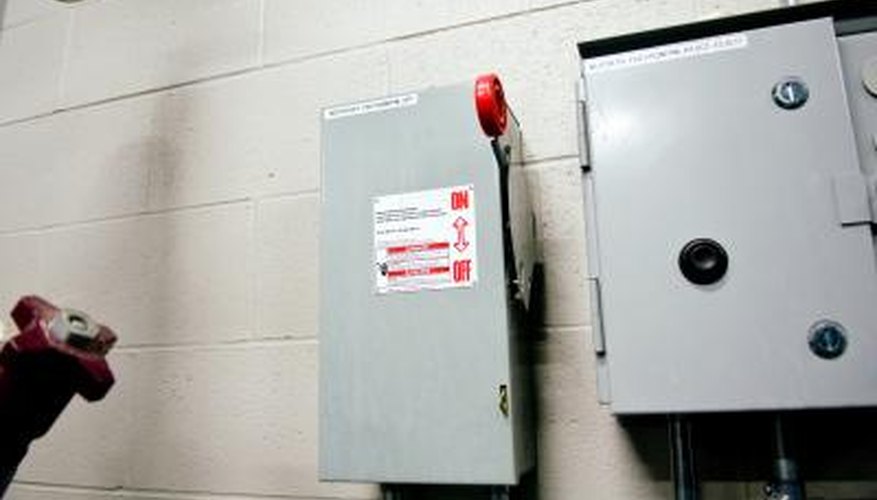Brushes on an electric motor are effectively the electrical conductors to the motor's armature. Electricity from the motors terminals is feed through copper wires attached to carbon brushes. The brushes are held in position on opposite sides of the armature and touch a metal ring inducing electricity into the armature windings causing the armature to rotate. If the brushes are worn, your motor won't operate properly, so occasionally testing them ensures they can be replaced, before your motor stops working.
Turn off the power to your electric motor, before attempting to test the brushes. Locate the two brush holders, one on each side of the armature either on the front or rear of the motor. Two copper wires extend from the brushes and connect to the terminals on the motor, so they're easy to identify.
- Brushes on an electric motor are effectively the electrical conductors to the motor's armature.
- Turn off the power to your electric motor, before attempting to test the brushes.
Use a pair of long-nosed pliers and remove the retaining clip that holds the one of the brushes in place. Attach your piers to the copper wire that connects to the brush and gently pull. A spring comes out of the brush holder, followed by the brush.
- Use a pair of long-nosed pliers and remove the retaining clip that holds the one of the brushes in place.
Check the length of the carbon brush against the size of the brush holder. The brush should be 50 per cent or more of the length of the brush holder. If it's less than 50 per cent it needs replacing.
Repeat the process on the other brush. If either of the brushes needs replacing, then always replace them as a pair. If they don't need replacing then push the brushes into the brush holders. Insert the springs and then replace the retaining clips using your pliers. If they need replacing, take the old brushes along to an electrical store, so you get exact replacements then follow the procedure for replacing then as above.
